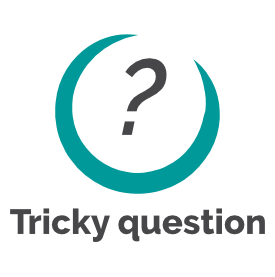
An expert provided an answer on a tricky question on academic integrity. Shortened version was previously in regular ENAI newsletter (December 2019).
Experience with a successful process of building an academic integrity culture at a campus in a country with a high level of corruption is shared by Jean Guerrero Dib, the director of Center for Integrity at University of Monterrey (Mexico).
Academic Integrity has to be considered as a characteristic that lies within the core of any academic activity, of every teaching-learning process oriented to achieve the highest standards of excellence and learning. It represents a goal and inspiration for all academic institutions truly committed to quality (Bertram-Gallant, 2016).
The university must fully train and develop the students “moral compass”, since it is not possible to consider professional training aside of an ethical competence. Being a professional must comprehend not only the mastery of technical, practical and / or theoretical skills, but also personal integrity and ethical professional conduct that helps to give ethical meaning to all the university endeavor (Bolívar, 2005).
Academic Integrity represents an opportunity to develop behavior habits in an activity that, for any student, represents a high percentage of their daily occupations.
Besides wondering how to convince the President or Board to work in this effort, it is important to answer how this last stage of formal education can be employed to strengthen the integrity and moral development of our students.
In our experience, when this topic has been exposed in different forums to high university authorities, we have not found, nor received any argument, against the need to build a culture of academic integrity in educational institutions. However, when time comes to commit resources, few of them dedicate serious efforts. In theory, it is very necessary and important, in practice, it is not so much, because it is not properly addressed.
The reality is—it doesn't matter which university we are talking about—that there is a serious problem of dishonesty in our classrooms. This has implications for the future professional performance of our graduates, that questions the quality of our educational effort and puts the prestige of our institution at risk. What are we doing about it? Either we promote a preventive and ordered effort or, we will be, sooner or later, prey to scandals that will damage the confidence, image and value of our “brand”.
How to move from conviction to action? We are not experts, but we can tell our experience at UDEM hoping to trigger some insights that contribute to achieve greater commitment and involvement in their respective universities.
UDEM’s experience working with academic integrity.
Since its foundation UDEM has looked after integrity in academic work, however, since 2009 it is done in a more intentional, holistic, and sustained manner. Following, a description of the most significant milestones:
Recognition of the problem.
It wasn't easy to make this decision at UDEM, but a multidisciplinary team of champions was formed with representatives from different stakeholders and led by the Chancellor. We were lucky to have our Chancellor and the President of the Board aware of the importance to work on integrity and committed to deploy resources. This group reviewed the current regulations related with academic integrity and carried out a comparative analysis in regards to what other higher education institutions in the world were doing. Among the most relevant decisions that emerged from this teamwork were: a) the affiliation to the International Center for Academic Integrity (ICAI), which made UDEM the first Latin American institution doing so; and b) the definition and deployment of a solemn text that students must include in all their evaluation instruments.
Integrity system.
Once a general view of our own regulations was clearer and with the experience of other educational institutions, a diagnostic study was carried out in order to figure out what was happening within the classrooms. Recognizing the size of the problem and unveiling the most important factors that motivate academic dishonesty behaviors at UDEM, has been a fundamental step in the process of strengthening its integrity culture. Derived from the results analysis, a work plan was decided resulting in the decision to have an area responsible for coordinating all the actions in favor of academic integrity at an institutional level, creating the UDEM Integrity System integrating all the strategies and practices to build the academic integrity culture, and implementing an Honor Code (UDEM, 2014).
Actions to strengthen academic integrity.
UDEM edited and implemented an Honor Code, enabling to establish the principles and standards for academic behavior expected from the university community, as well as specifying breaches and sanctions. An on-line course was designed and deployed for faculty in order to train them in regards to the Integrity System. A web page with Strategies to prevent plagiarism was also published (UDEM, 2014).
Joining efforts, a commitment for all.
UDEM, aware of its social responsibility and that dishonesty is a generalized problem, created an alliance for integrity with different civil society organizations. As part of these efforts, since 2013 UDEM organizes the Annual Conference on Academic Integrity, where international experts participate. The conference participants come from different parts of Mexico and Latin America. Likewise, the Center for Academic Integrity site has been published in order to share experiences, resources, and tools to other educational institutions.
Center for Integrity for an honest campus.
In 2016 the Center for Integrity was established with the mission to strengthen the culture of integrity in the community and collaborate with other educational institutions and civil society organizations in promoting personal ethical behavior in the different professional environments.
UDEM Center for Integrity has decided to accomplish an honest campus, free of corruption; being leader in Mexico and Latin America for its offering of programs promoting a culture of integrity; and becoming a reference in topics of applied ethics in the different disciplines and professional environments.
The Center has: updated the Honor Code and adapted a short version of it in the form of a Decalogue; established an Honor Council integrated by faculty and students; appointed Academic Integrity Officers for each School; deployed an Academic Integrity Seminar to students found responsible for academic dishonesty; developed and offered an Induction Course on Academic Integrity ( a MOOC for new incoming students and a program for faculty); designed and deployed communication campaigns to increase awareness; and created an endowment that guarantees continuity of this effort and shields the commitment to fight against academic dishonesty and other forms of corruption. The Center manages a scorecard where it can keep track of the performance indicators and inform its decisions for the improvement of processes and outcomes.
Throughout this time, we have learned many things. We could sum up the ones that we consider more important in the following way:
- Our world desperately need a change, and it can only come from citizens. Educational institutions play a very important role in the shaping of better citizens. As educational institutions we must continuously ask ourselves if we are helping to form individuals. Strong support from top leadership must be assured.
- Policies themselves, cannot promote profound change. It is necessary to change people’s underlying assumptions, and that will take a long time and effort. Good intentions are not enough, there must be strengthened by resources deployed and leaded by a team of champions with seniority level to make things happen.
- We need to keep encouraging faculty’s commitment. The institutional dynamics keeps them busy with classes, research and accreditation processes. They argue not having enough time to improve their teaching practice and at the same time, adopt integrity practices in their classroom, disregarding that both are the same thing. It is important to emphasize with Lang (2013) that quality and integrity are sides of the same coin, one cannot be found without the other. Faculty plays a key role and they must be on board.
- Students are part of the problem, but also of the solution. We cannot afford to fail to involve them in the construction of the culture of integrity. Students must be main characters and active change agents.
- International standards and strong relationships with leading experts and institutions around the world may represent a programmatic line to work towards a culture of academic integrity. It is worthwhile to take them into account.
- We can’t do this alone. It is wise to engage others into this effort, because in the end, this is our contribution to the creation of a better society.
References:
- Bertram-Gallant, T. (2016). Systems Approach to Going Forward. In T. Bretag (Ed.), Handbook of Academic Integrity (First, pp. 975–978). Singapore: Springer.
- Bolívar, A. (2005). El lugar de la ética profesional en la formación universitaria. Revista Mexicana de Investigación Educativa, 10(24), 93–123. Retrieved from https://www.redalyc.org/articulo.oa?id=14002406
- Lang, J. M. (2013). Cheating Lessons, Learning from Academic Dishonesty. Cambridge, Massachusetts: Harvard University Press.
- UDEM. (2014). Sistema de Integridad, Compartiendo la Experiencia UDEM. Monterrey, N.L., México: Universidad de Monterrey.
